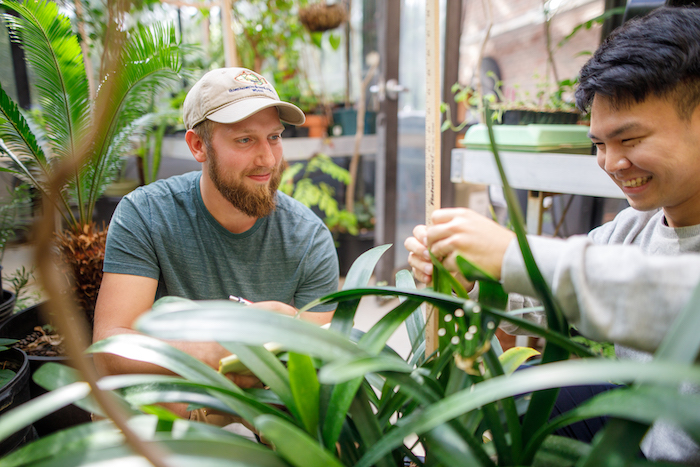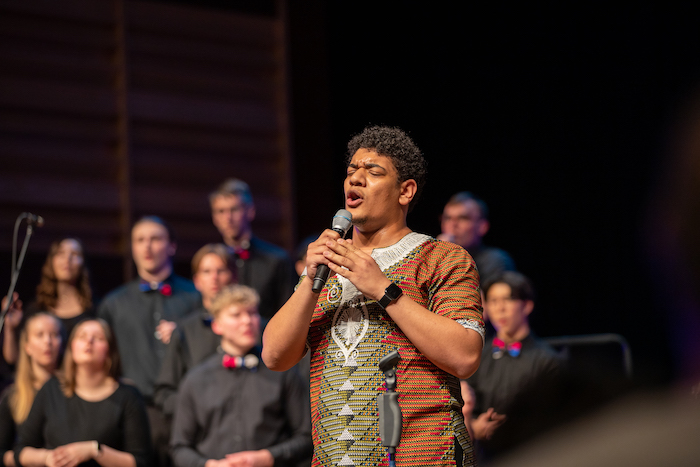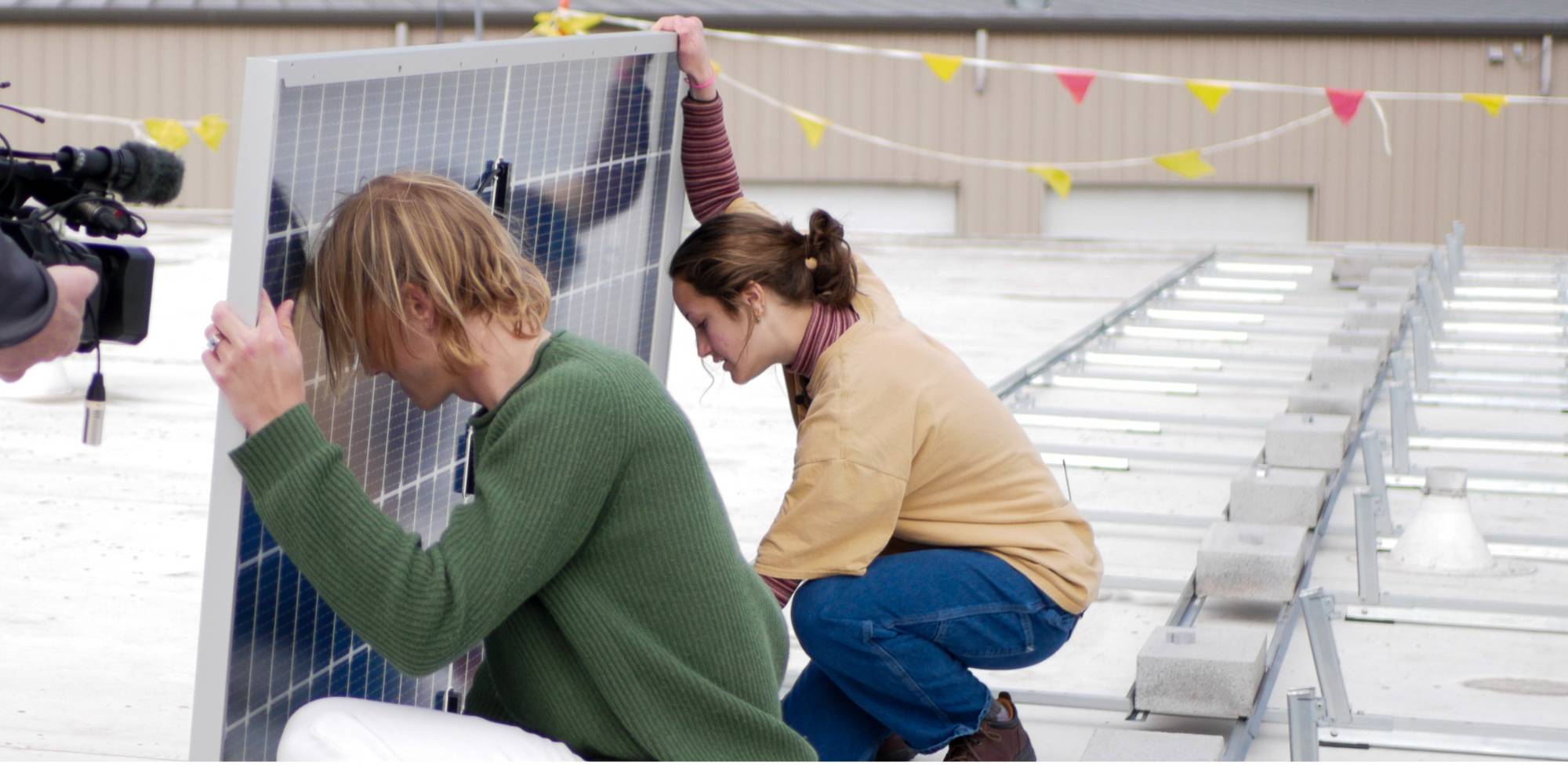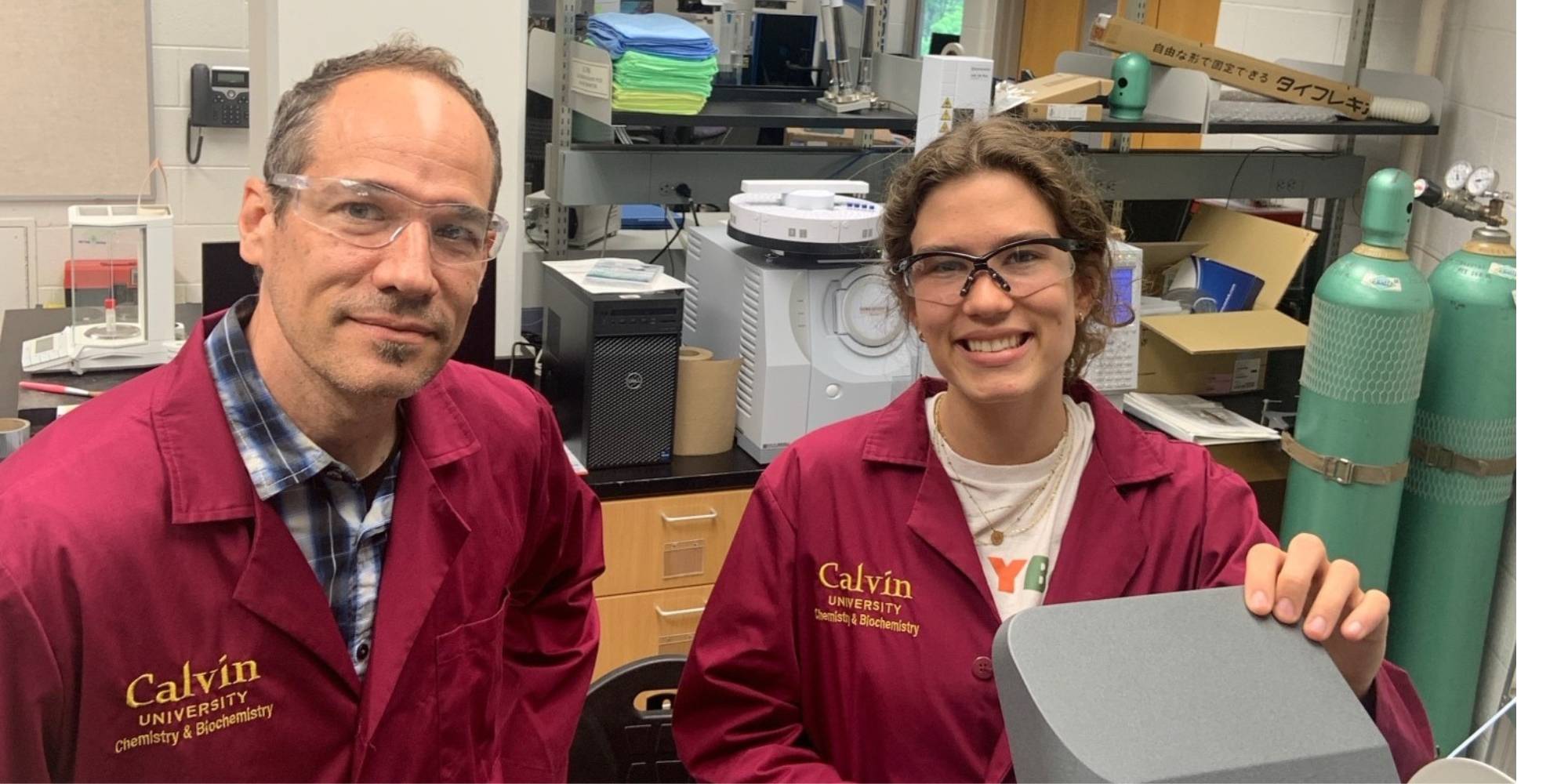Student Research Leads to a Major Discovery

Telo Onyango and Jocelyn Nieze are two of the three Calvin students responsible for discovering the invasive Longhorned Tick at Grand Mere State Park.
On Friday, May 31, Telo Onyango, Jocelyn Nieze, and Myles Radersma were walking along a path in Grand Mere State Park in Stevensville, Michigan. The trio was doing routine tick surveillance efforts as part of their summer research project at Calvin University. They were using a method called drag sampling, which consists of dragging a white cloth across the path to determine the presence of ticks in the environment.
While what they were doing was routine—the path they took that day would lead to an unexpected discovery.
“We saw it [a tick that attached to the white cloth] and it looked a bit bigger,” said Radersma, a rising senior studying biology from Kitchener, Ontario. “We thought ‘it’s probably just a weird thing.’ So, we threw it in a vile to check out in the lab.”
Radersma admits he had no clue what it was, but jokingly said ‘watch it be a longhorned tick.’
Taking a closer look
Five days later, the group started to look at the specimen much closer in the lab and started to suspect that they may have indeed found something new.
“We were sitting in the lab, and they asked me to take a look at this tick,” said Dr. Will Miller, the students’ advisor and an assistant professor of biology at Calvin. Miller admits to taking a quick glimpse at it and saying, ‘yep, rabbit tick.’”
The students insisted Miller take a closer look. And so, he did. Miller then thought it would be important to connect the students with Dr. Jean Tsao’s lab at Michigan State University. Dr. Tsao helped to connect the Calvin research team with Dr. Viva Kobbekaduwa, a previous graduate student and public health entomologist for North Carolina Department of Health and Human Services, who had previous experience with longhorned ticks. Miller has been collaborating with both Dr. Tsao and Dr. Kobbekaduwa on projects related to tick ecology for the past five years.
Collaborating with academic and agency partners
“At this point, we started to understand the gravity of what we discovered,” said Nieze, a rising senior studying biology on the pre-vet track from Ingleside, Illinois. Once the ticks were suspected to be longhorned ticks, Dr. Tsao connected the research team with state officials, including the Michigan Department of Agriculture and Rural Development (MDARD) and the Michigan Department of Health and Human Services (MDHHS). “It snowballed fast. We met that same afternoon with those agencies and showed them pictures.”
From there the group connected with the U.S. Department of Agriculture’s National Veterinary Services Laboratories, who were able to officially verify the identity of what was discovered by the students as the invasive longhorned tick. This marked the first detection of this specimen in the state of Michigan.
“This discovery highlights the value of the contributions from our academic partners and the necessity of our continued collaboration to protect animal health throughout Michigan,” said State Veterinarian Dr. Nora Wineland, DVM, MS, DACVPM. “By knowing this species of tick is in our state, we will increase our educational outreach to producers, animal owners, and animal health professionals so we can all do our part to safeguard animal and public health.”
Students leading the way
The discovery, which was made public on June 13 by MDARD, is huge for the state and while Dr. Miller is the principal investigator on the research project, he’s quick to admit this discovery is the students.
“From point of discovery to identification, to interactions with the state and federal agencies, these students have been not only part of this, but leading the work from that perspective,” said Miller.
While the students were certainly surprised by the discovery, they’ve come to expect to have a key role in the research process—something quite unique to a place like Calvin.
“As students, we’re not just techs that go into the field and then do lab tests. We are there from step one through the entire process,” said Radersma, who has been doing research since his first year at Calvin. “Professor Miller is the PI on this investigation, but we feel like we are also driving members. Professor Miller has guided the connections and helped us with the verification, but we are at every meeting along the way. It’s super cool to see the entire research process—it’s affirmed my choice that this is what I want to do for my career.”

Value of peer mentors
While Radersma and Nieze also researched with Miller last year, Onyango, a transfer student from Kenya, is just weeks into his research experience and already seeing the immense value.
“When I came into this project my goal was to get a little bit of experience working in the field and the lab. At my previous university I did a research project, but it was not quite like this. It was more restrictive. Here, it’s a bit freer. We have instructions, but we go out and learn how to do it,” said Onyango, a junior biology major who transferred to Calvin this year from a university in Kenya. “From day one, Myles and Jocelyn have been instrumental. I came into this project not knowing anything about ticks. I can say they’ve done a great job of bringing me up to speed. This summer experience has cemented my career path.”
While it’ll be hard for the research team to top their recent discovery, they know their summer research project now has statewide implications.
“Typically, when this tick has been found in other states it’s found in veterinary circumstances, usually found on cattle and then reported to the state or federal agencies,” said Miller. “We found this during active surveillance, which means we may have caught this early, and that’s the goal. This touches on the importance of the continued work of these three students and the significance of the work the additional 11 students at Calvin have done since this project started back in 2020.”









